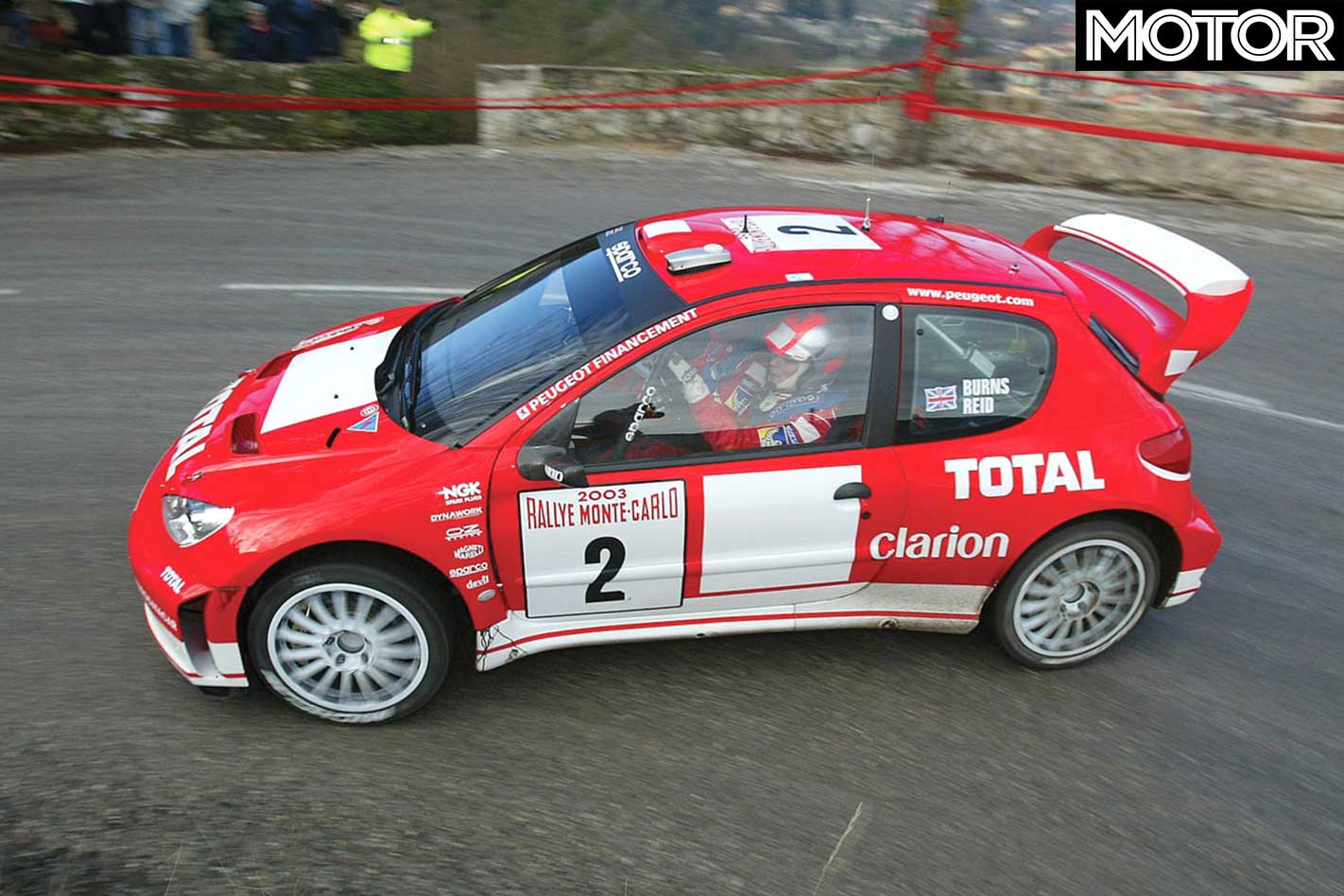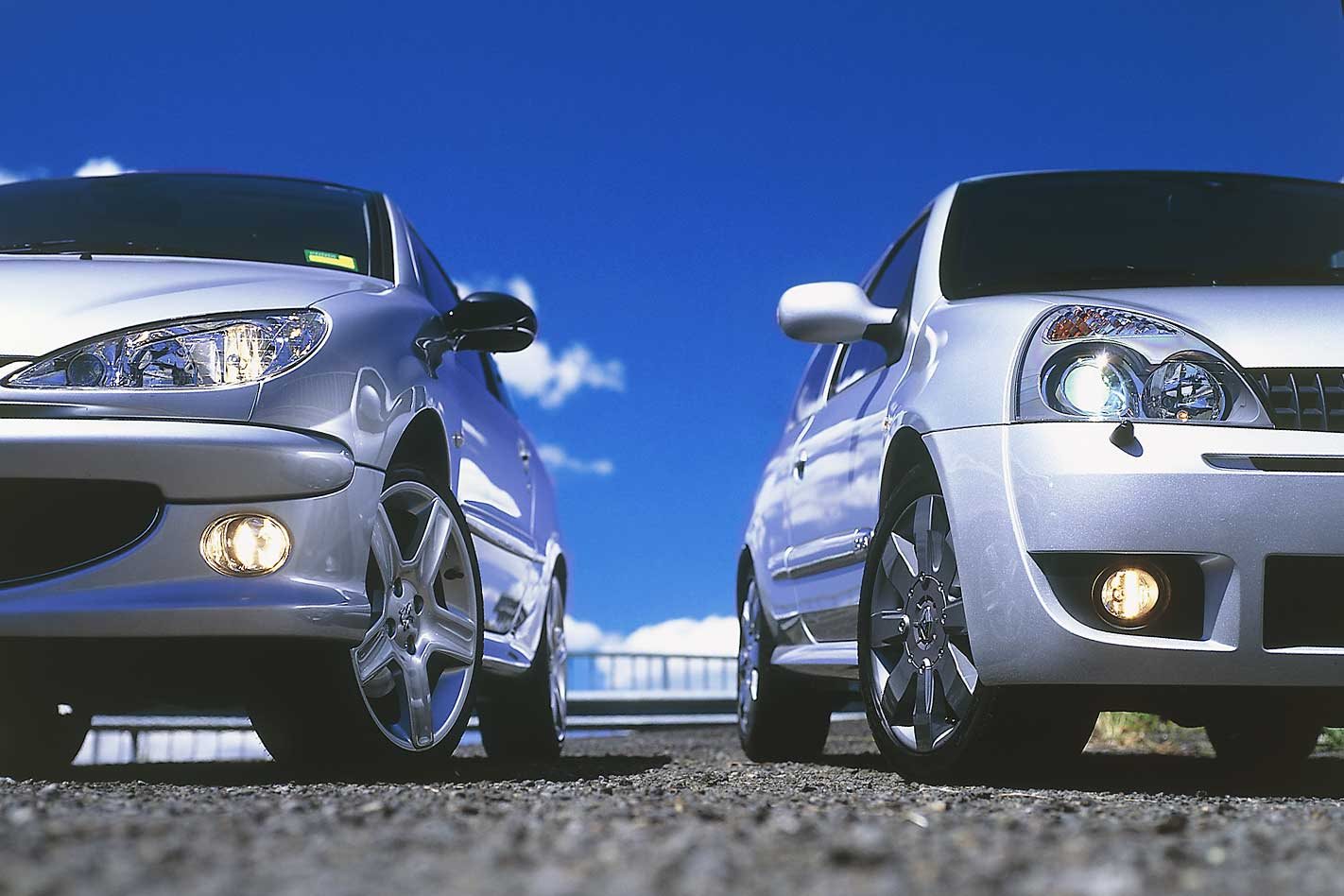It’s curious the hot hatch scene should have originated in Germany, evolved in Japan and, today, be dominated by France.
This feature was originally published in MOTOR’s February 2005 issue
Yep, the last two losers in WWII have been supplanted by the head-chopping surrenderphiles they tried to steamroll. That may change when the Golf GTI is brought to bear in a few months but, for the time being, these are the best you can buy for traditional hot hatch money. And not by a little bit, either.
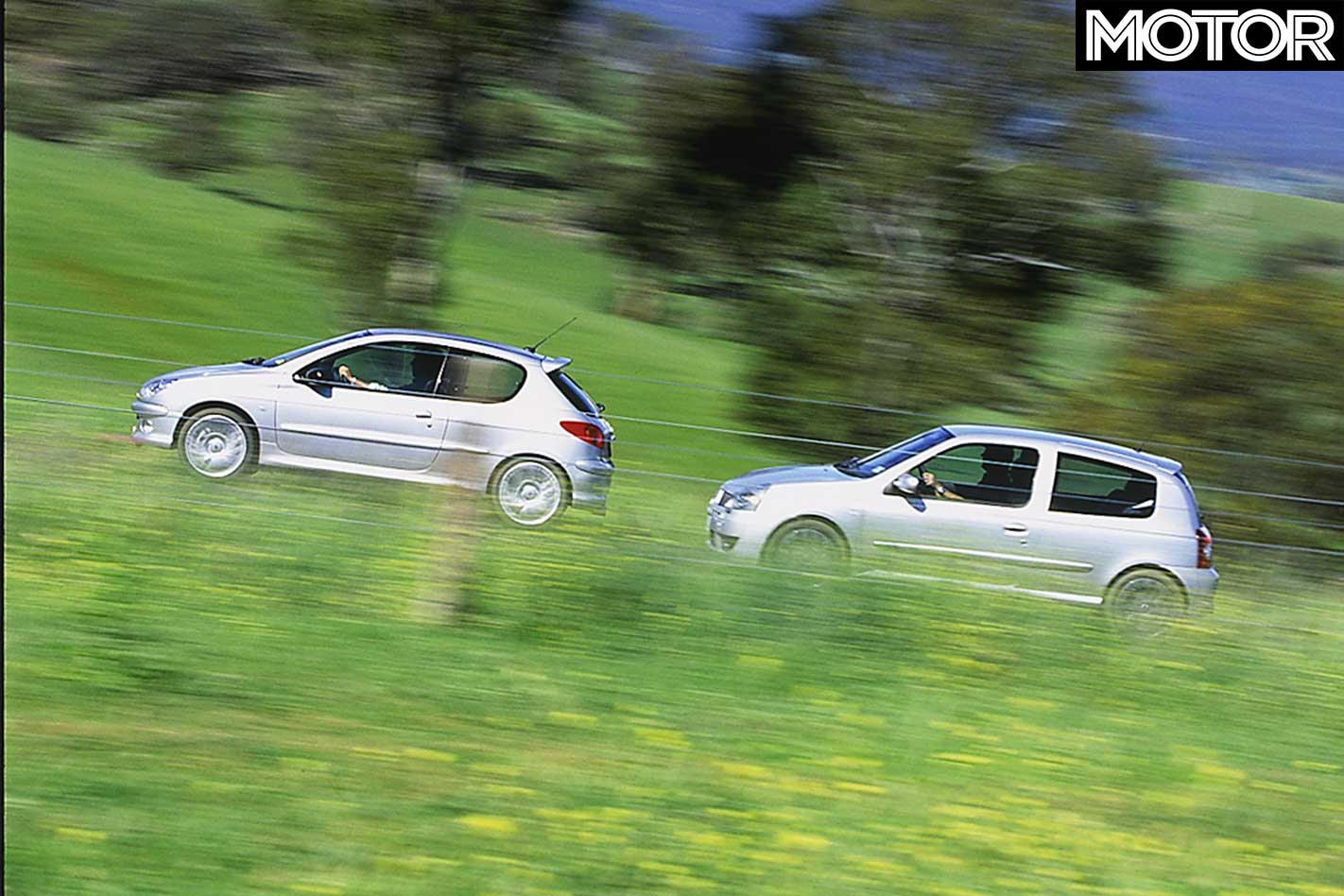
And, when Renault made its (by then, third) Australian launch, led by the earnest little Sport Clio, it confirmed that the best of hot hatches ate snails.
Peugeot escalated the violence late in 2003 by cranking the stock GTi’s power output to 130kW, stuffing 17-inch boots under it, ripping out half the suspension travel, slapping a $34,990 sticker on it and calling it the 206 GTi 180.
Didn’t take Renault long to respond, though. Late last year it not only claimed bragging rights with one extra kilowatt, but it did it in a two-pronged attack. There’s the Sport Clio 182 as the (slightly) softer, (slightly) more affordable alternative, but the firmer-riding, harder-cornering $34,490 Sport Clio Cup has led the charge.
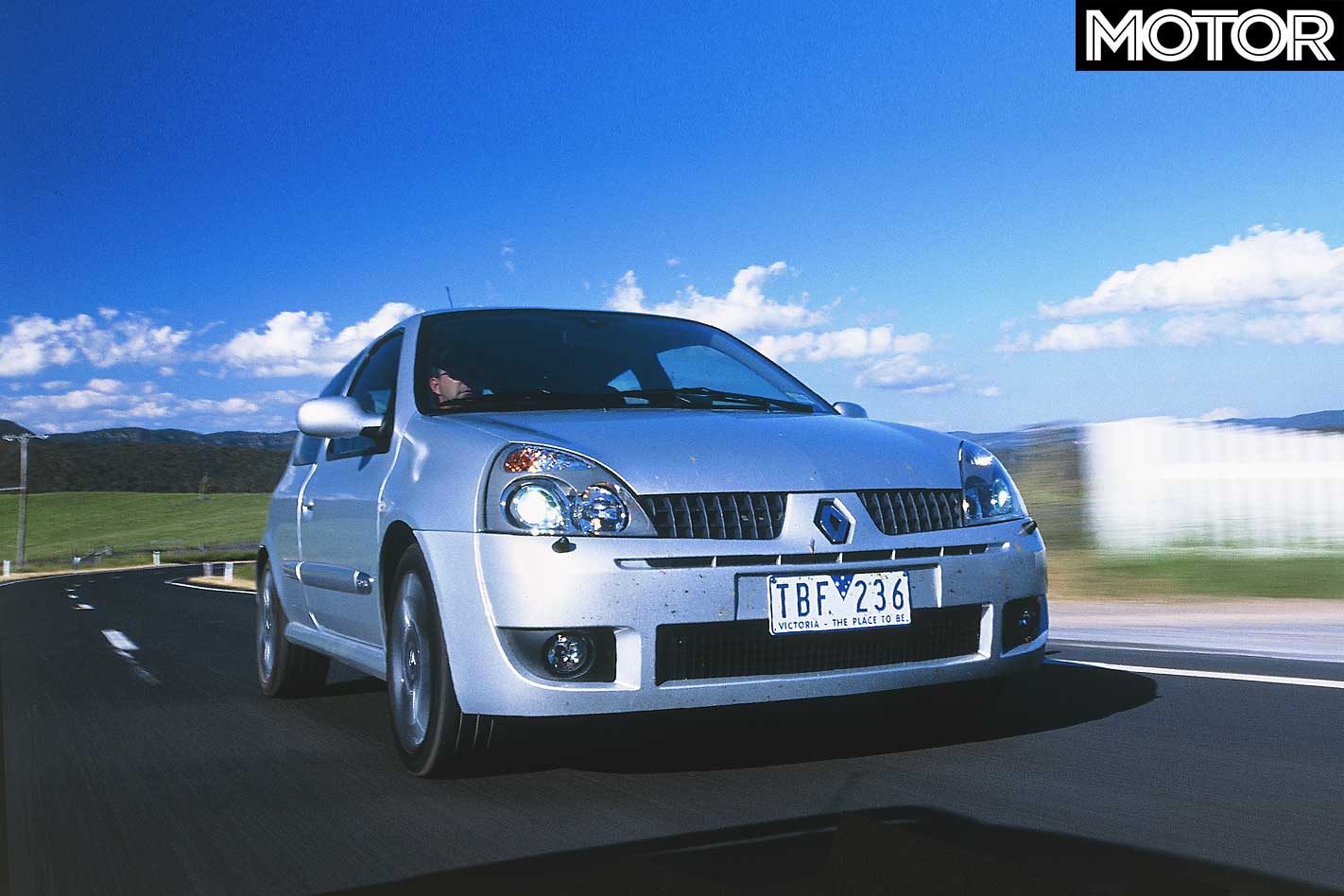
These things are closer than a cricketer’s box, in just about every way you could imagine. They overlap on their philosophies, outputs, price and weight, they’ve employed a lot of the same engineering tricks and, together, they’ve taken the hot hatch fight well beyond the reach of anything Japanese.
Their engines are highlights, but also show up just how close to the wire the engineering has been pushed. At 87 horsepower per litre (from the same 1997cc EW10 block used in the 307 and 406), there are times when the Pug’s motor feels like the engineers have compromised harmony for horsepower, and that doing any more of it could become unpleasant.
With a cylinder head that is machined off-site by F1 supplier Mecachrome, an alloy block with cast-iron liners and variable inlet valve timing, the EW10 J4S zings its way to 7300rpm. Peak power is a bit below that, though, at 7000rpm, while there’s 202Nm of torque at 4750rpm.
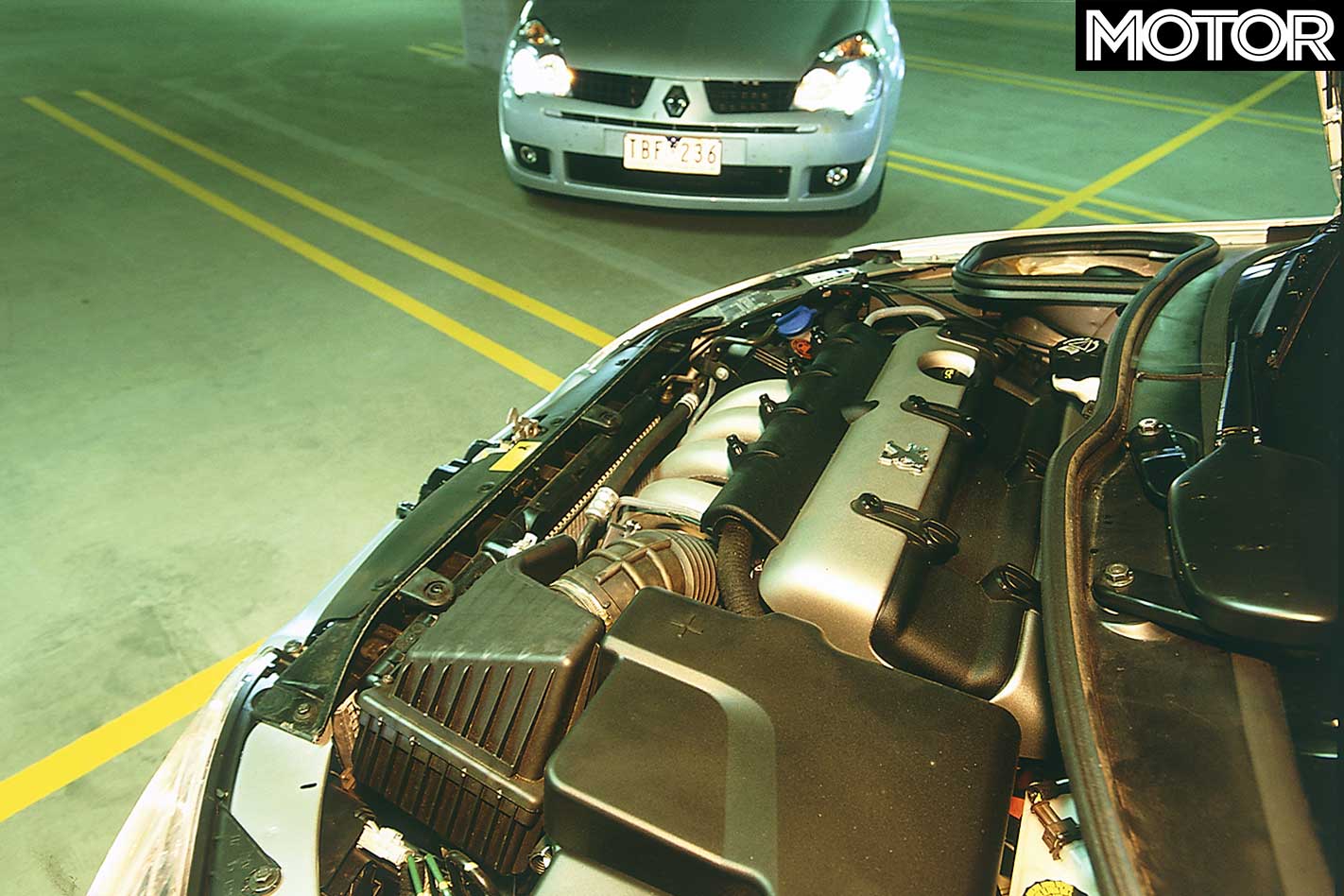
The engine’s aural tuning and NVH are designed specifically to make the driver feel like it’s all frantic and urgent. And it works. Its throttle response is instant, the noise builds in one direction (no timbre changes here) and, by the time you’ve hit the power peak, the cabin’s fair zinging with vibrations and induction roar.
It’s not going to blow WRXs away in a straight fight, but it won’t give a Subaru the chance of running away from the argument, either.
The Pug’s at its most urgent in the top 2000rpm, and the close-ratio five-speed gearbox works hard to keep it there. Cable-linked, its throws are long but accurate and, while there’s a lot of feel coming through the lever, not much of it is anything like the rifle-bolt actions of solidly linked shifter. In fact, shift action is actually a shortcoming in both cars.
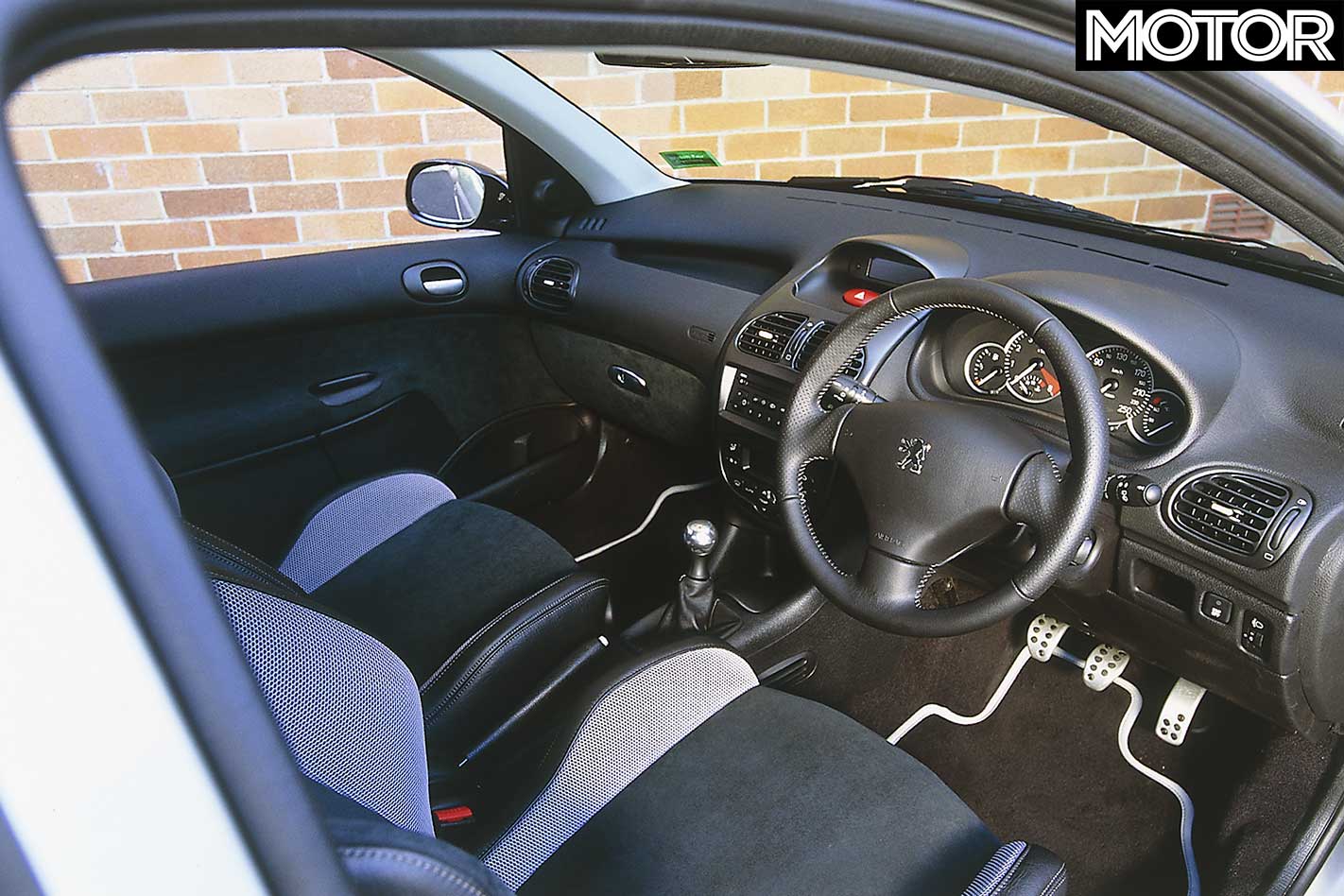
The GTi 180’s first gear is actually taller than the one in the garden variety GTi (it’ll pull 66km/h at 7000rpm, Peugeot says, to hurl it out of tight corners), but every other ratio is shorter. Even so, the Peugeot seems to build its strength, just as it builds its sound and vibrations.
In isolation, it feels fast. And it is fast. It’s just that, in a straight line, the Renault’s faster.
The Pug can hold onto the Clio Cup in first but, conquer the Renault’s baulky one-two shift and it’ll be gone, chasing hard after WRXs and Integra Type Ss. It’s a mean little sucker and it seems to get a fair bit more gristle out of its 131kW than the Pug gets out of 130.
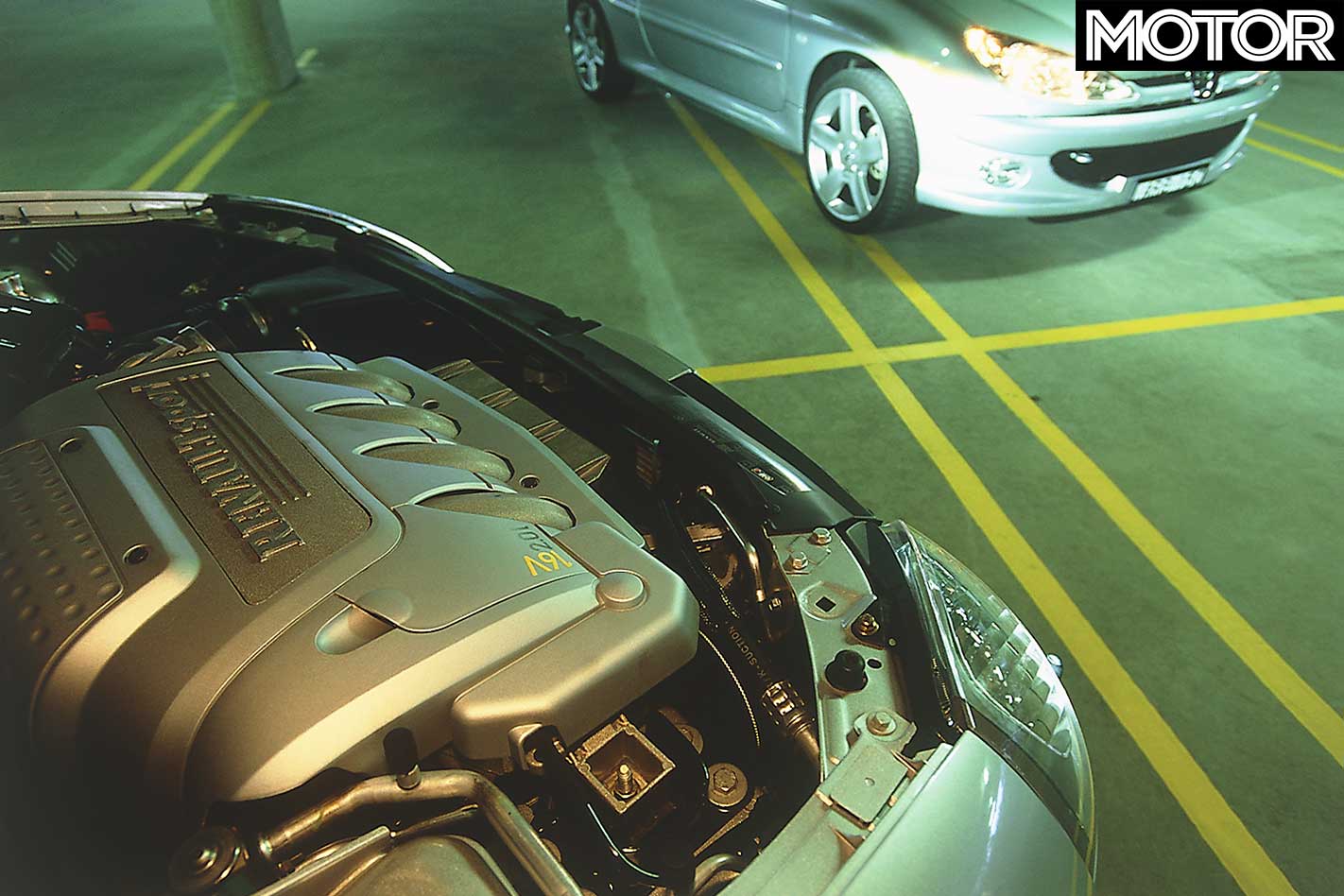
Where the Pug fires up in its last 2000 revs, the Renault’s genuinely strong from 1500rpm through to 7000rpm. They’re line-ball for throttle response, though, and it’s a highlight in both cars. They react instantly and instinctively to even whispered alterations in throttle openings, and that helps them to take advantage of their tautly sculpted chassis setups.
They both actually ride better than the tale of the mechanicals would have you believe. The 180’s front springs are a fair bit stiffer (40mm/dan versus 55mm/dan) than the GTi, while the Sport Cup takes the Sport’s already stiff set-up and cranks the front springs by 20 percent and the rears by 15 percent.
The Peugeot is firm – the firmer of the two – but admirably resists crashing into square-edged ruts. Its high-water mark is never going to be its suppleness, but it stands out from the crowd by having easily the most cohesive open-road chassis anywhere in hatchdom.
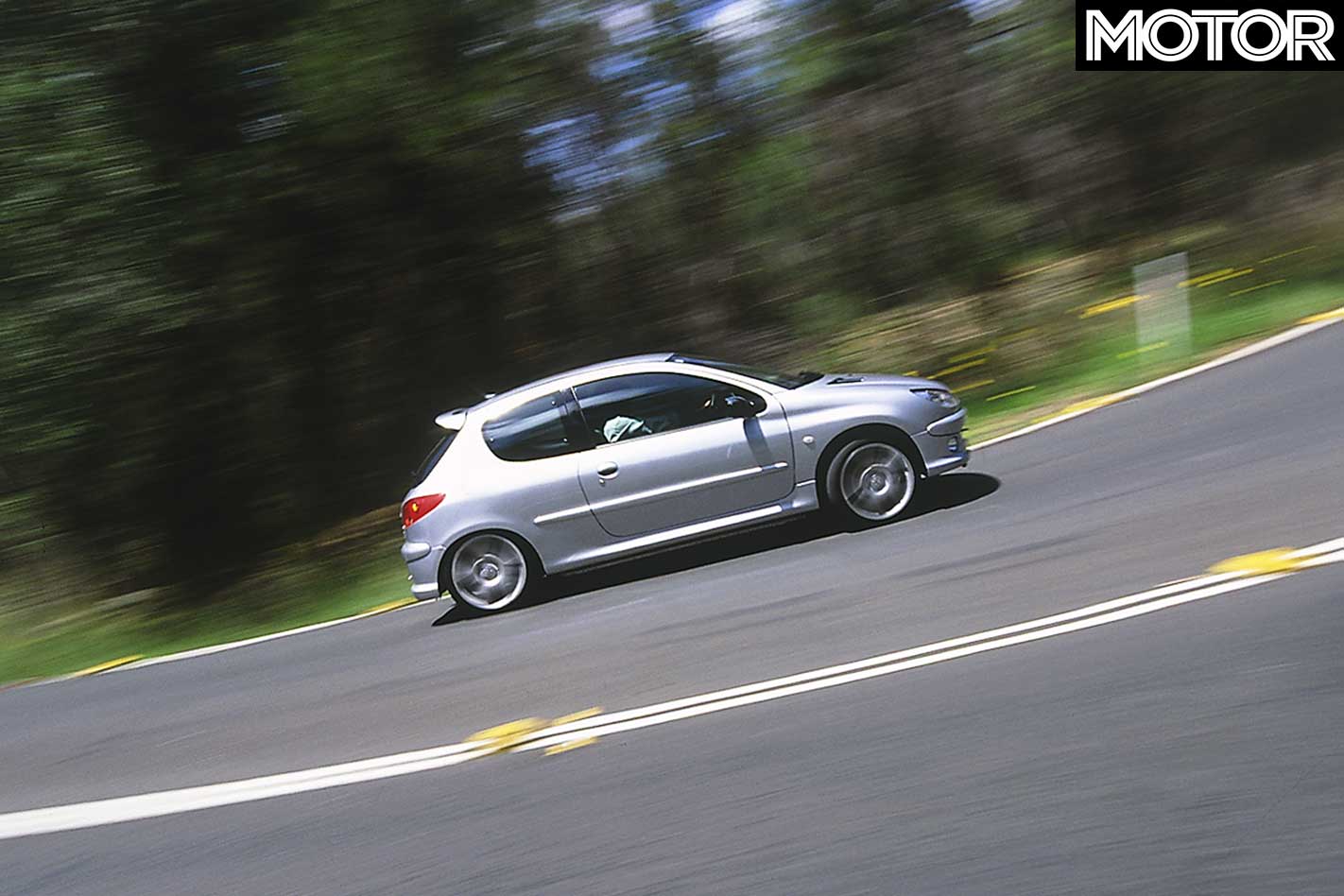
A well-driven Pug will stick with a moderately driven Rex on most pieces of winding road, it’s a combination of very low front and rear roll centres, remarkably accurate steering and beautiful balance.
Its steering is linear and the weighting, just off-centre, is sublime. And when it’s giving its all, the steering becomes a glorious concert of nibbles over bumps and twitches on power-down in undulating country.
Push hard on the way out of a corner, and you can get into the throttle earlier than you think, but you’ll still fall short in getting power-down out of tighter corners.
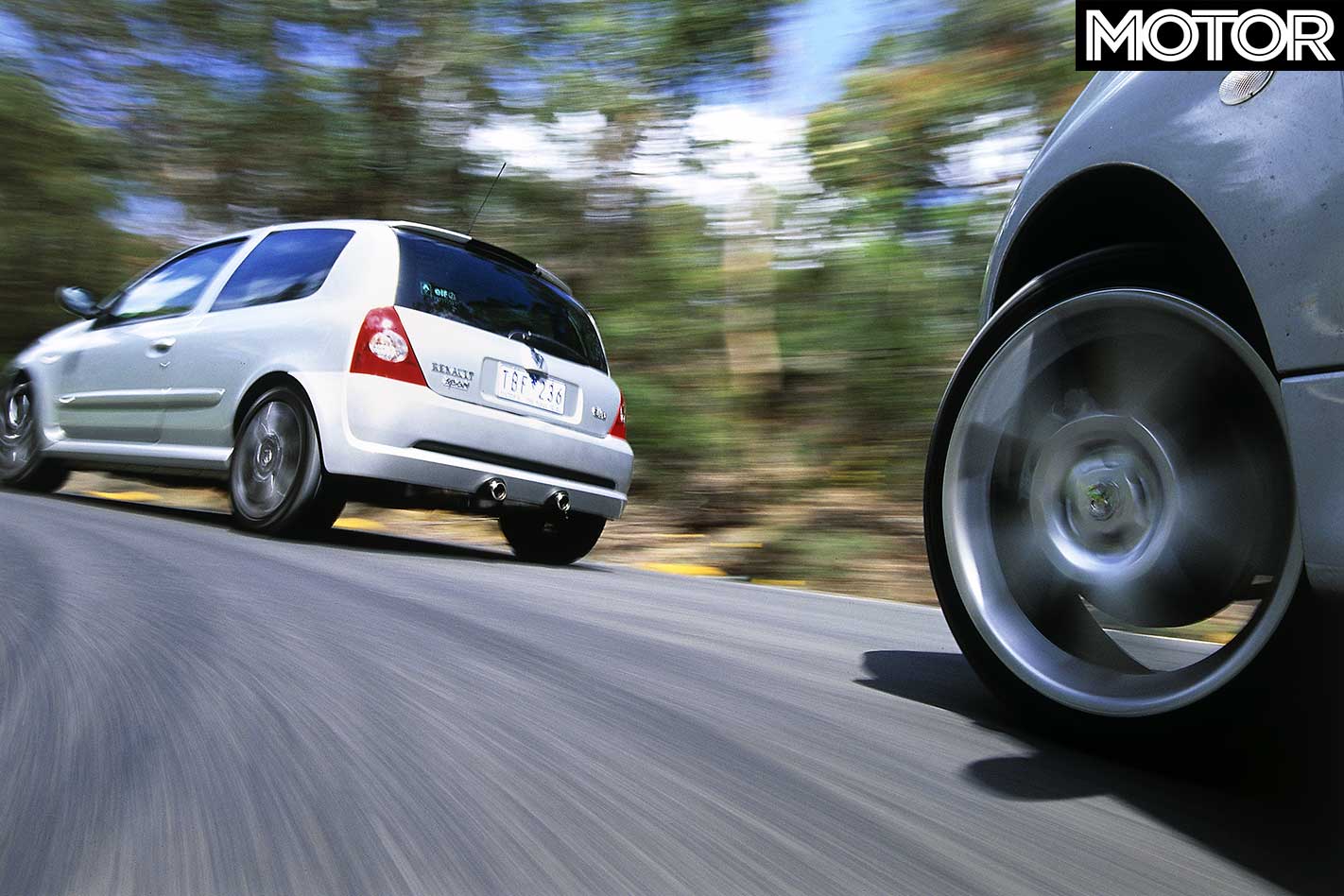
Even if you’re carrying a bit too much speed, though, it never falls into boring-arsed understeer. Instead, it feels as though all four wheels are sliding across the surface, and you can easily adjust it via the pedals. The odd thing is that the car feels like it rolls a bit in town, but corners very, very flat under lateral pressure once you get out into the hills.
Its turn-in is a highlight, particularly on faster corners. Once you’ve cocked it into a quicker corner, though, it’ll settle into a gentle, soft understeer, but it’s easy enough to fix it. Simply lifting off the throttle, or using a left-footed brush of the brake pedal, will do the job and the nose will tuck back in. In fact, it’s actually quite prone to lift-off or turn-in oversteer, but just how much the tail swings out will be up to you.
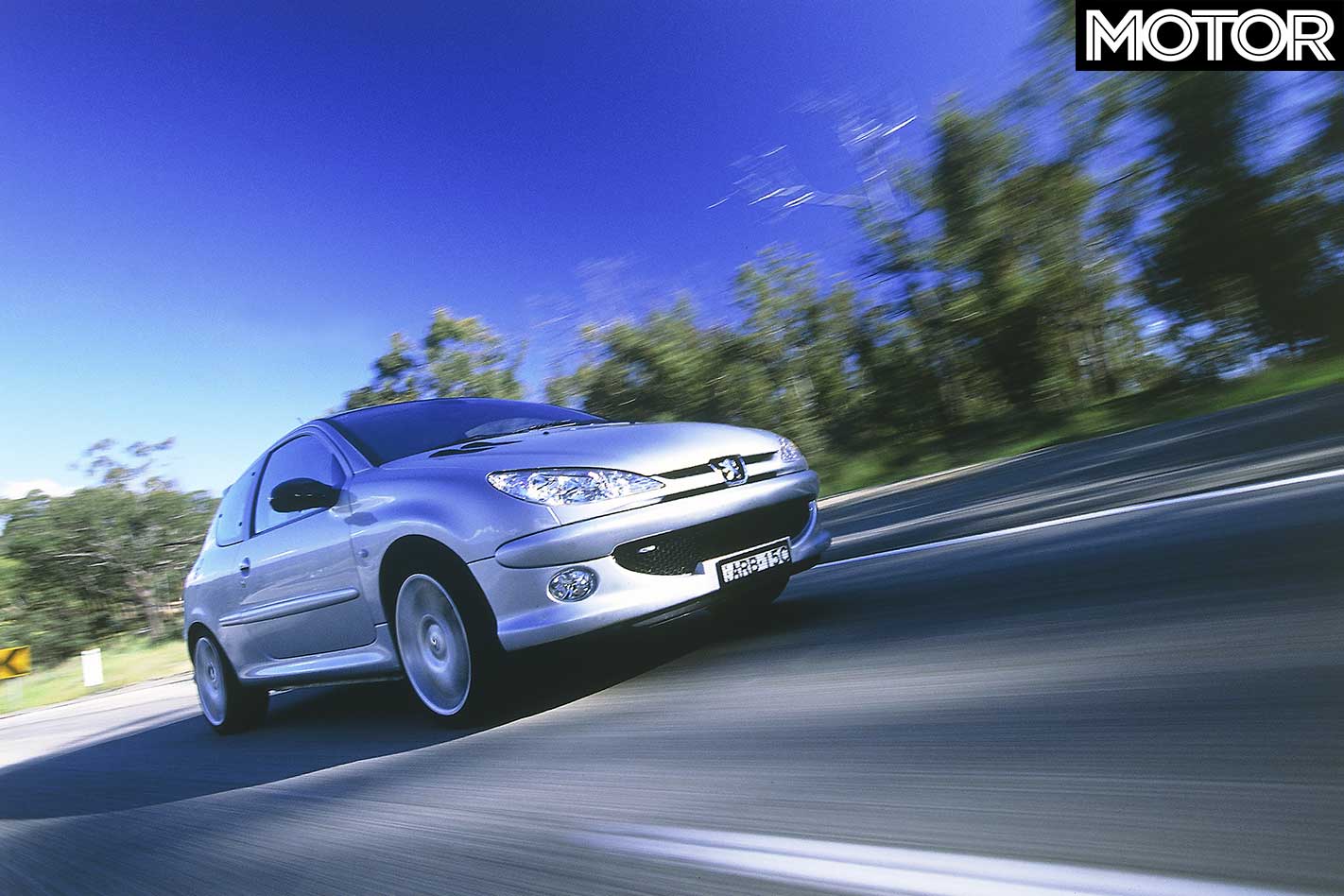
That’s the beauty of the Pug. Press it harder and it becomes a faithful little friend, and that friendly nature makes it easy to get the best out of.
The only significant disappointment with the chassis is that it’s underbraked – of the two cars, it runs out of pad bite first and it can fade to the point where it activates the EBD to get its retardation process anywhere near where you want it to be. Not so the Renault, which resists cooking classes belligerently.
The Clio’s the newer (or, at least, most recently updated) body, and it shows through new-school manufacturing techniques, like the one-piece turret, but for all that, the Pug’s a better looker, inside and out. The 206 is a classic example of the last school of body construction, the Renault is a so-so example, aesthetically, of the new one.

Both of them run terrific interiors, with the Peugeot again claiming the style points, with sexier-looking seats, but the driving position, as ever in the 206, is compromised. Nobody we tried could get it quite right for arms, legs, steering and gearshift. The Renault’s better, but not by much, and its seats work harder for you in the twisty stuff, too.
Still, the Pug’s biggest issue is that, for all of the giggles and the easy access to its speed, the Renault is faster. Substantially faster, but not quite as altogether.
Its steering, for example, doesn’t have the Peugeot’s feel or its accuracy, and the roll centre feels quite a bit higher, especially at the rear. There are situations, too, where it seems more reliant on tyre grip than chassis grip, such as second-gear corners. It’s also more prone to be twitchy, with a quick steering rack making it a game of toss-catch as it dances on bumpy roads.
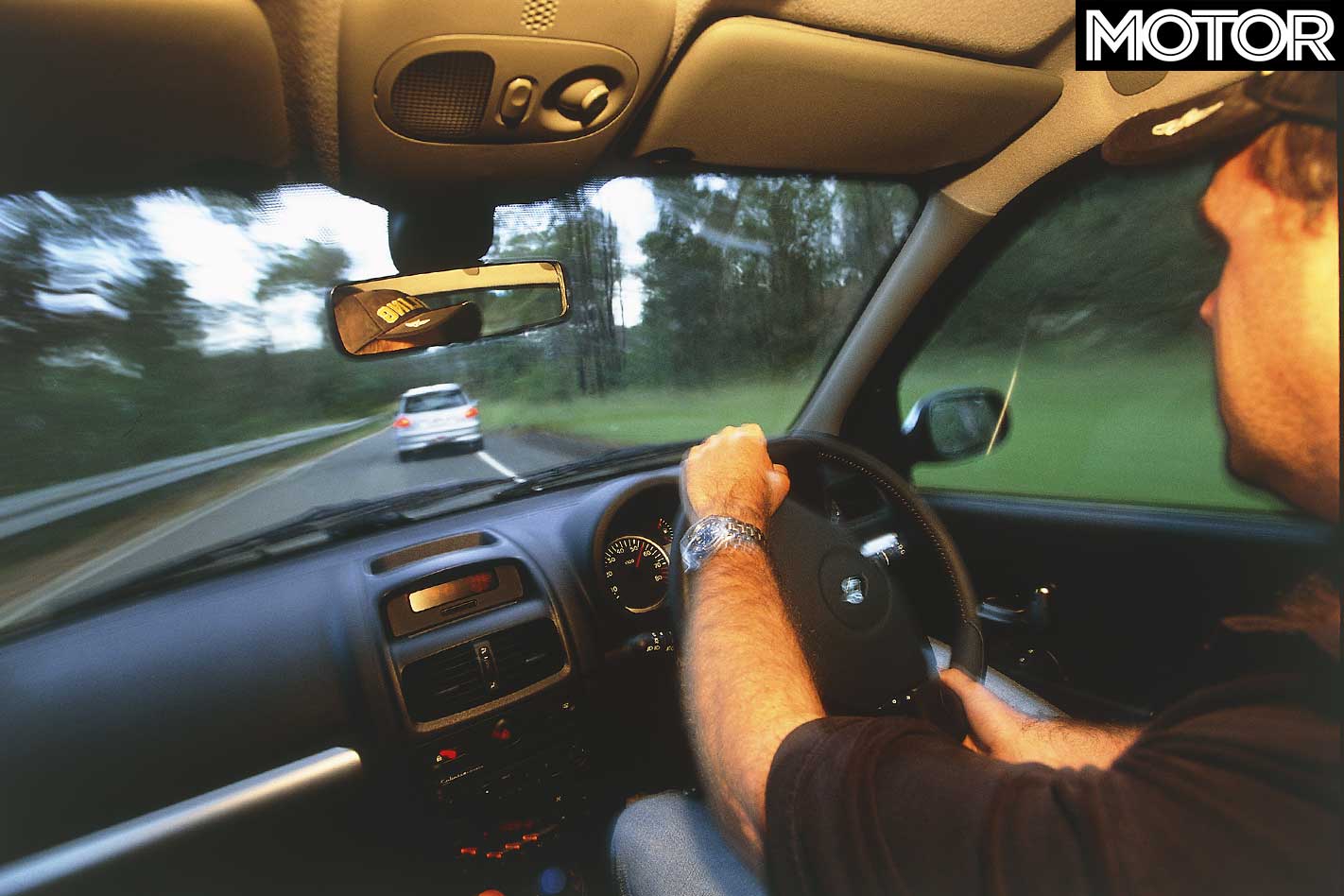
One of the key points here is its ability to change direction. If the Pug turns in quickly, the Renault is simply remarkable; sucking harder to the road on its 16-inch rubber than the 206 does on 17-inch wheels.
The odd part of all this is that the Clio’s steering isn’t that flash. There isn’t much feedback and it’s got a dead spot, relay-wise, just as the weight moves outwards on turn-in as you come off the brakes. It may be tyre related – other Michelins we’ve driven on have had something similar – but, where the Peugeot’s steering gives out constant, easy-to-absorb data, the Clio doles it out in big packets, jerking over bumps, with little or nothing in between.
For all their overlapping outlooks, there are significant differences between these two cars. It’s clear that Peugeot has worked very hard to maintain the 206’s premium position with the GTi 180, but it’s all work based on a chassis that, no matter how good at birth, is ageing.
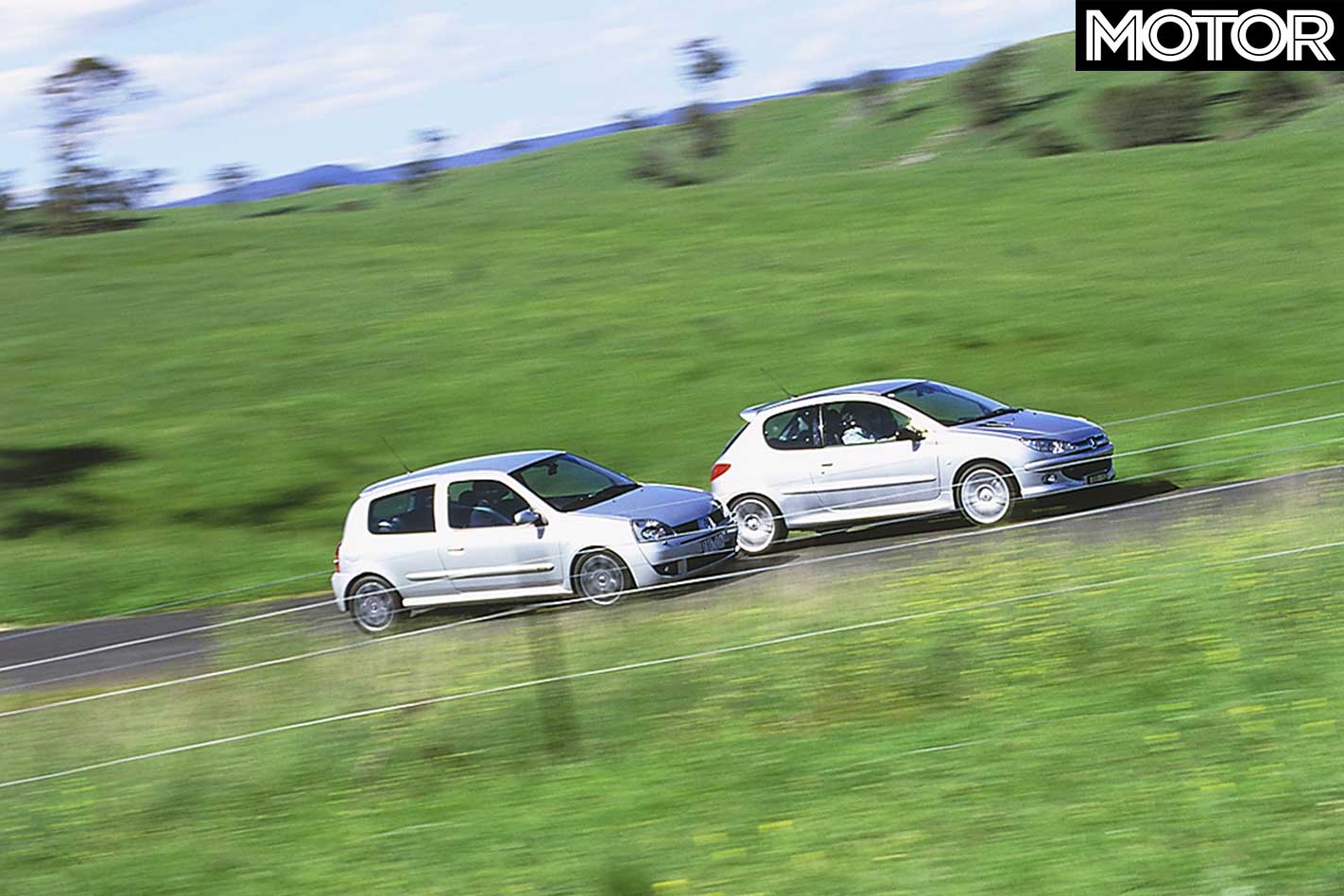
It’s just that, with an $81 million Clio upgrade less than a year old, and $19 million of that spent on the Sport models, Renault has built the Cup from a younger platform. That it can throw Peugeot’s one-inch tyre size advantage back in its face and can take seemingly similar kerb weights and engines, and turn them into another win is evidence of that.
For all that, though, the Clio is a more difficult car to drive at its limits, and only shows its best to those prepared to chuck it around and not worry about its drifting, bucking tendencies.
The Pug’s best may be a lesser present to receive, but it’s easier for most drivers to get at.
Which is why we won’t call this one, even if it seems like a clear win to Renault. For some of you, the price of the Clio Sport Cup may be just too high. But then, the plain-Jane Clio Sport rides better, is easier to drive quickly and only a fraction slower. And, what’s more, it’s cheaper, too.
Fast Facts
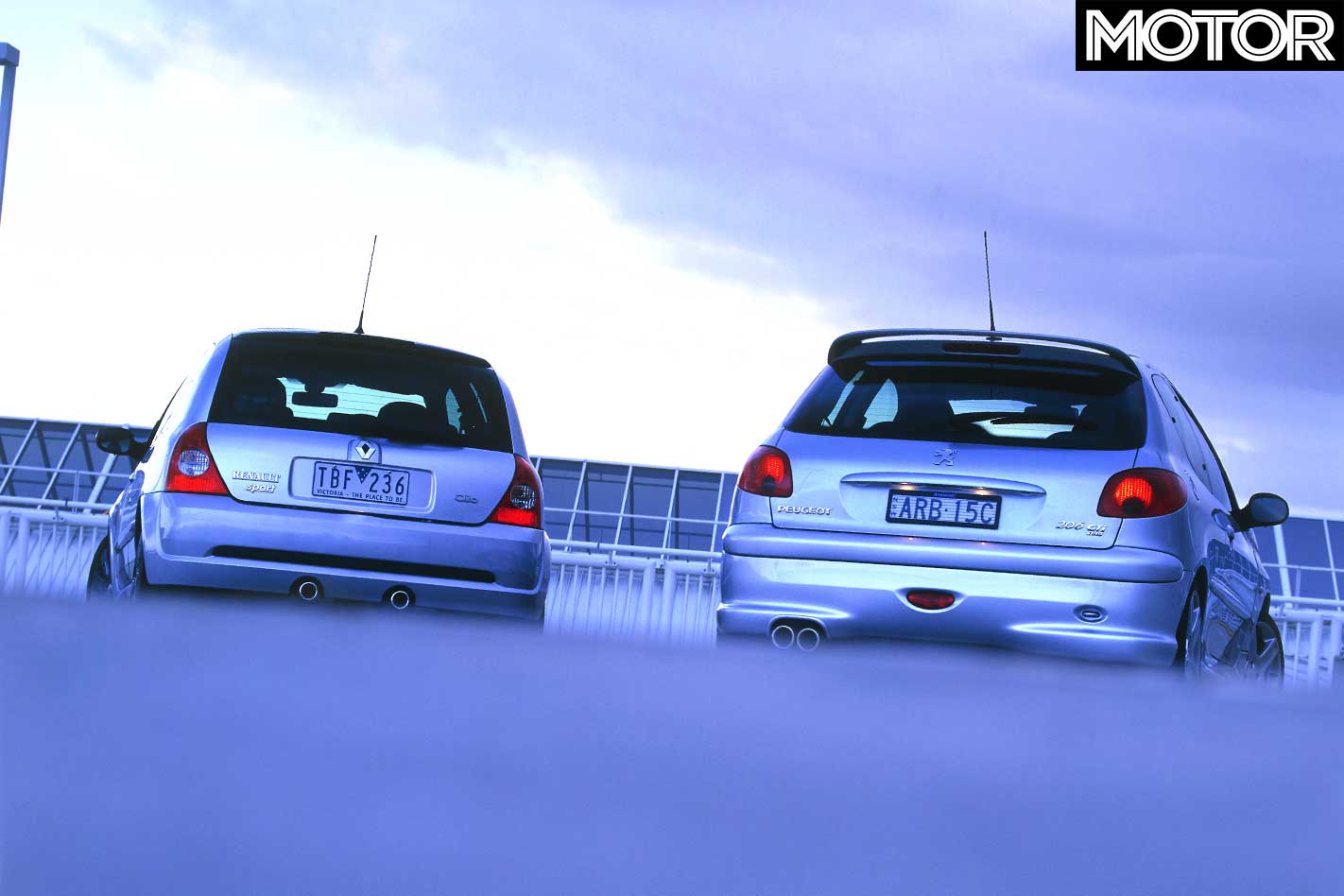
| u00a0 | 2005 Peugeot 206 GTi 180 | 2005 Renault Sport Clio Cup |
| BODY | three-door hatch | three-door hatch |
| DRIVE | front-wheel | front-wheel |
| ENGINE | front-mounted 2.0-litre, DOHC 16-valve four-cylinder | front-mounted 2.0-litre, DOHC 16-valve four-cylinder |
| COMPRESSION | 11.0:1 | 11.0:1 |
| BORE x STROKE | 85mm x 88mm | 82.7mm x 93mm |
| POWER | 130kW @ 7000rpm | 131kW @ 6500rpm |
| TORQUE | 202Nm @ 4750rpm | 200Nm @ 5250rpm |
| WEIGHT | 1100kg | 1035kg |
| POWER/WEIGHT | 118kW/tonne | 127kW/tonne |
| TRANSMISSION | five-speed manual | five-speed manual |
| SUSPENSION | MacPherson struts, coil springs, anti-roll bar (f); trailing arms, torsion bars, anti-roll bar (r) | MacPherson struts, coil springs, anti-roll bar (f); torsion beam, trailing arms, coil springs, anti-roll bar (r) |
| L/W/H | 3835/1673/1430mm | 3733/1639/1409mm |
| WHEELBASE | 2442mm | 2485mm |
| TRACKS | 1437mm (f); 1428mm (r) | 1430mm (f); 1408mm (r) |
| BRAKES | 283mm ventilated discs, single-piston calipers (f); 247mm solid discs, single-piston calipers (r), ABS | 280mm ventilated discs, two-piston calipers (f); 228mm solid discs, single-piston calipers (r), ABS |
| TYRES | 205/40 R17 (f & r) | 205/45 R16 (f & r) |
| PRICE | $34,990 | $34,490 |
Champion Clio The first Sport Clio came to Oz in 2001 and was quick to impress
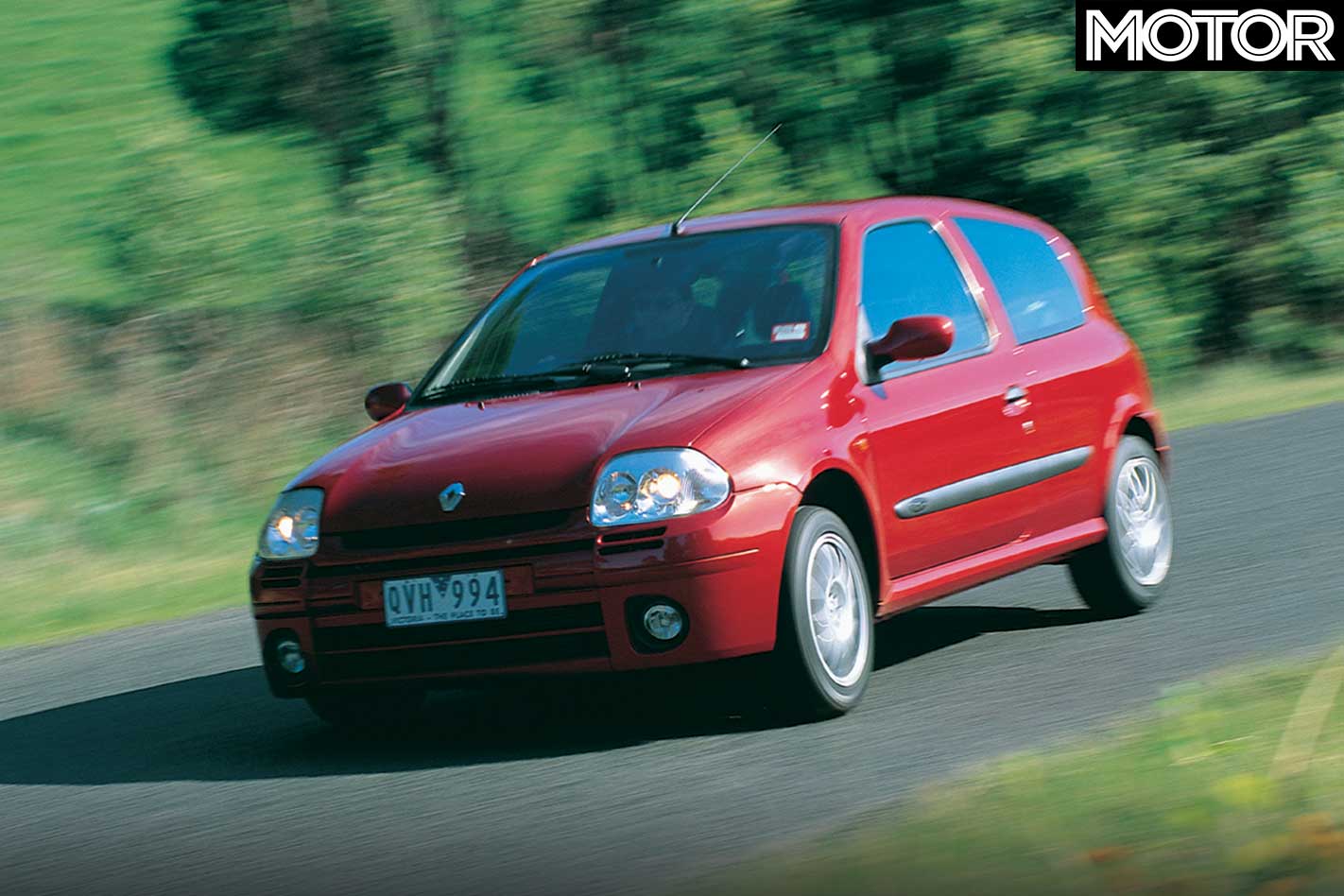
Powered by a 124kW 2.0-litre four cylinder, the front-driver won Bang For Your Bucks outright at its first attempt, and dominated its $30,000-$40,000 class until pipped by the Holden Astra SRi Turbo in 2003.
A brilliant handler, the Sport Clio won against 27 rivals, helped in no small way by its 200Nm of torque and cool three-wheeling cornering style. Terrifically chuckable, the Sport Clio has also proven itself sought-after in the used-car world.
The Peugeot timeline Peugeot has long been the king of hot hatchdom. Here’s the lineage
1984 – Peugeot 205 GTi Agile, simple and it ruled for a decade. From a 1.6-litre four, it ended up with 1.9 litres, with handling that is still a benchmark today.
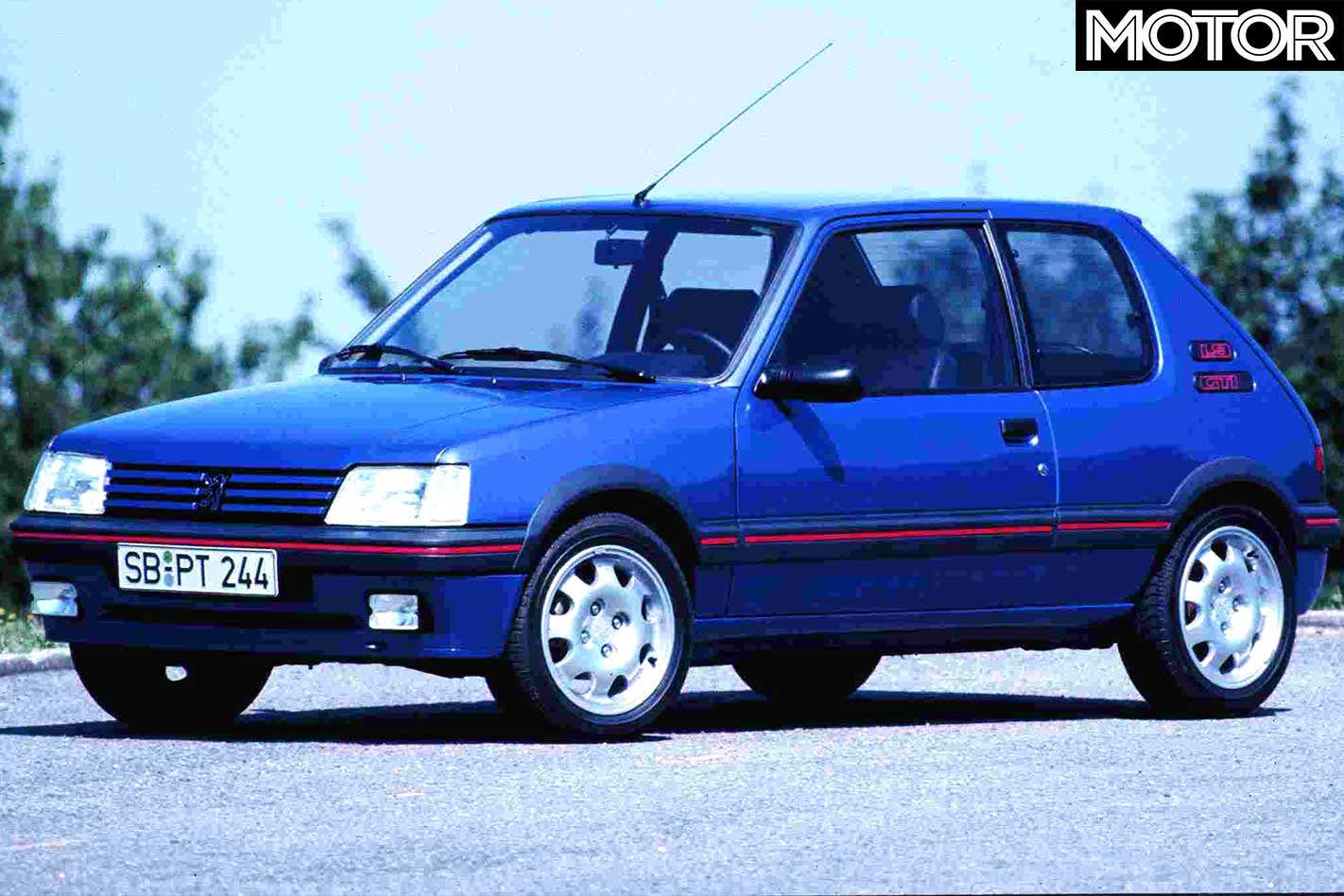
1984 – Peugeot 205 GTi T16 Built for Group B rallying, the T16 was a 205 in shape only. Tube framed, mid-engined, turbocharged and AWD, it won two WRC titles.
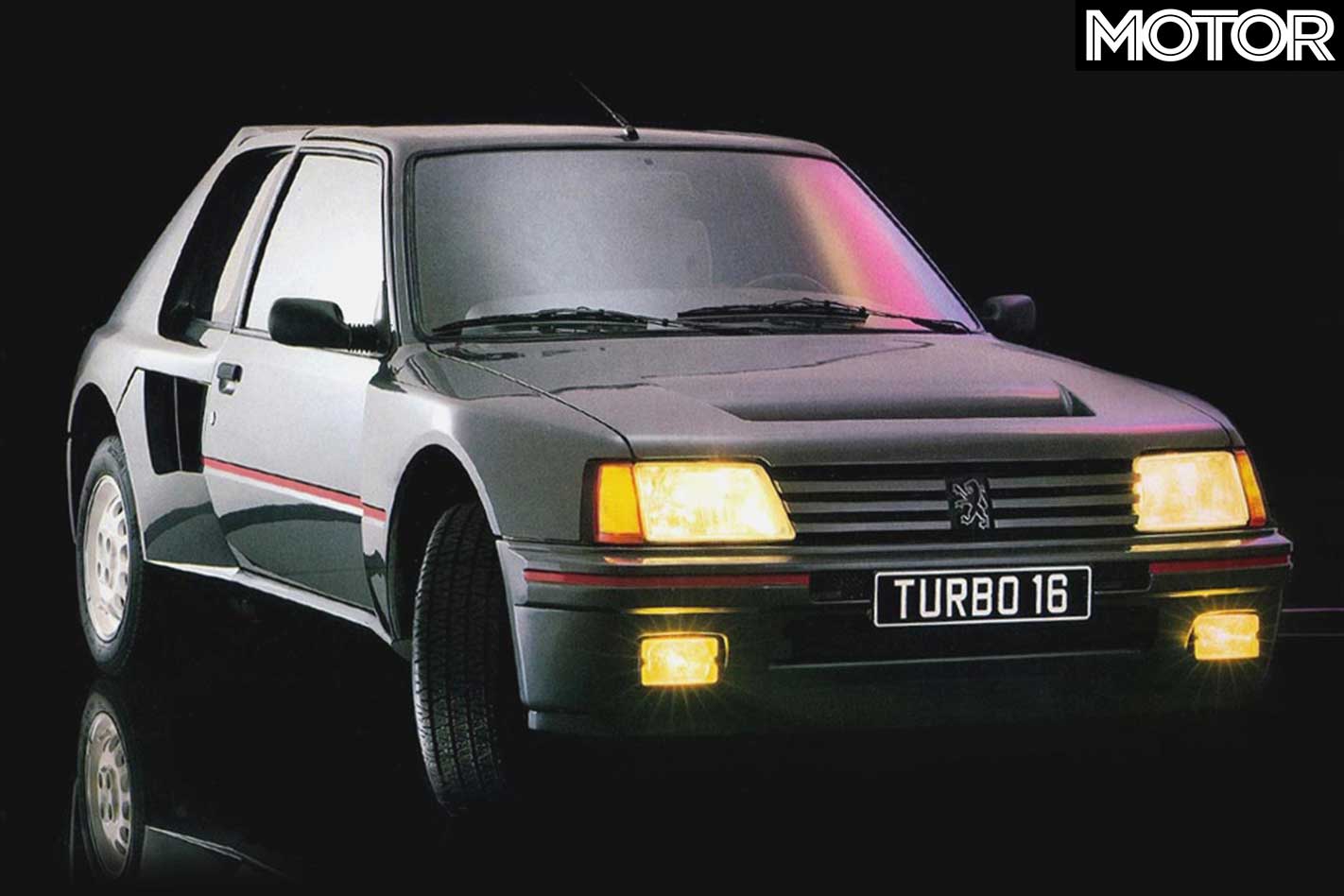
1999 – Peugeot 206 GTi A 2.0-litre, the 100kW Pug had a slightly awkward seating position, but bags of torque. Still softer than the 205 GTi, but very quick.
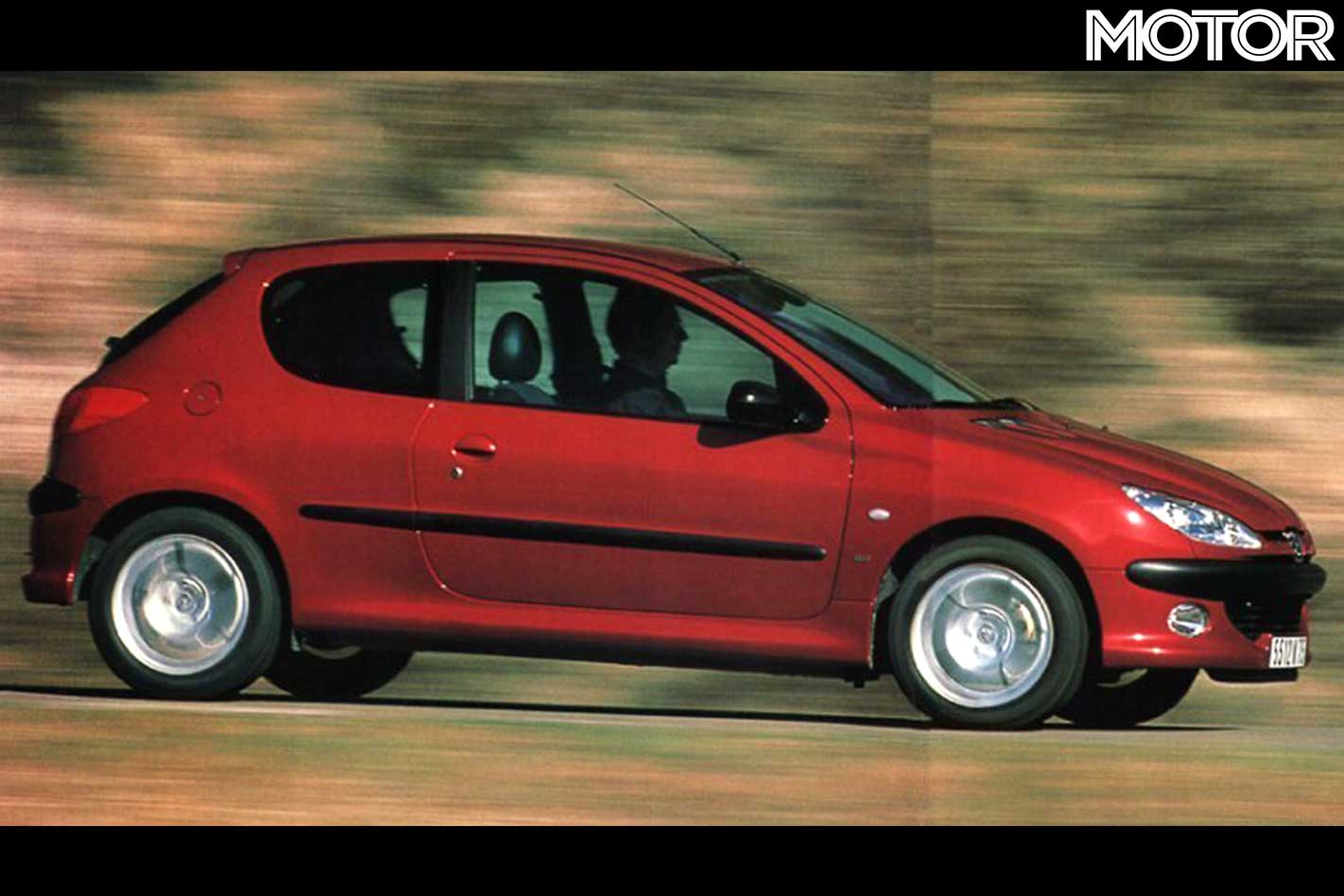
2000 – Peugeot 206 WRC This version will forever be associated with Marcus Gronholm’s two world titles. Richard Burns couldn’t drive it, though.
